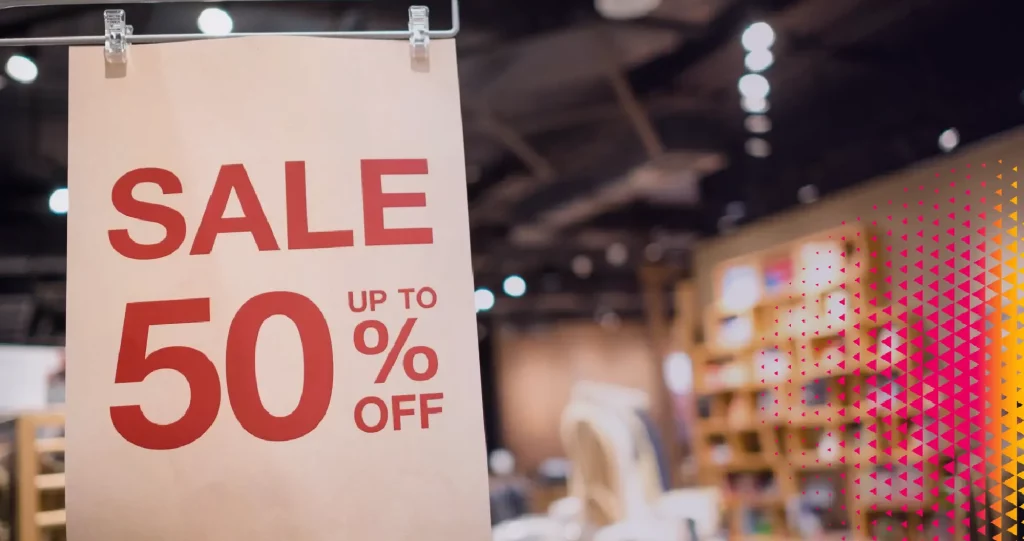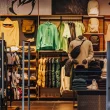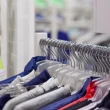5 Steps to Implement Effective Promotions Across Your Retail Network

Creating promotional offers demands genuine expertise to captivate consumers and drive sales. Not sure which promotions to run? Do you think your sales strategy could be refined to offer more value to your network? This article outlines 5 essential steps to implement successful in-store promotions and key strategies to effectively support your network and in-store teams.
What Type of Promotion Are You Running?
Promotional offers are integral to your sales strategy and significantly impact your network’s commercial performance. Therefore, it’s important to first define your objectives to set the right success levers: clearing out stock, attracting new customers, rewarding loyalty, increasing the average basket, boosting turnover during a key period, and more.
By addressing these questions, you can choose between two types of promotions:
- Generic Promotion A generic promotion is a large-scale campaign covering all or part of the in-store offer, held annually or as a special event (a -30% store-wide sale for instance). These offers aim to attract the maximum number of potential customers or clear out unsold stock with attractive pricing. The goal is to win over new customers (first purchase) and then retain them.
- Specific Promotion A specific promotion targets a defined audience and allows you to highlight a partnership with a brand or to thank and retain certain customers. While it aligns with your overall commercial strategy like generic promotions, it enables more precise and targeted actions, such as introducing a newly referenced brand or a new product range.
Leverage Aggregated Data
After deciding whether to run generic or specific promotional offers, leverage your network’s most valuable resource—your sales, customer, and stock data. These data sets provide essential insights:
- Trendy items vs. unsold, overstocked items
- Customer behavior (first purchase, bundled sales, complementary product purchases, etc.)
- The most sold equipment, clothing, or accessories according to seasonality (tents in summer, skis in winter, etc.)
- Regions with varying levels of activity
- Top-performing brands vs. underperforming ones
Additionally, keep an eye on current and upcoming societal or commercial events (World Cups, Spring, Back to School, Black Friday, sales, etc.) and the calendar: identify the low-traffic periods in-store and decide if you want to boost traffic during these times.
Based on your commercial objectives, evaluate whether to extend these offers to your digital channels as well. Is the promotion limited to physical stores, or will it also be available online?
Aggregated data provides invaluable insights into customer behavior, enabling you to quickly select the right products for your promotional calendar, set sales targets, identify target customer types, and determine the best times of the year for promotions.

Establish Brand Communication
Once you’ve defined your promotional offers, you need to communicate them to your target audience. Three communication levers are essential for a successful promotional campaign: a clear and consistent proposition with your brand, a visible and understandable offer, and well-targeted media coverage.
For your network, here are three critical phases of action:
- Pre-communication: Launch email campaigns, personalized or generic newsletters, flyers, radio, and press advertising (local or national), and targeted media based on client profiles, SMS, etc.
- During the Promotion: Besides newsletters, inform your customers in-store through posters and promotional screens about current offers. Ensure that customers are aware of the offers as soon as they enter the store. Promote salesperson-customer interactions to expedite decision-making through product demonstrations, explanations of competitive pricing, etc. Continue driving in-store traffic via social media posts (e.g., offer of the day).
- Post-communication: The end of your promotional offers should signal upcoming ones. Don’t delay in boosting store traffic by thanking customers for their purchases and loyalty.
Discover also: 5 Effective Business Actions to Boost Your In-Store Revenue
Enhance the In-Store Customer Experience
Create an in-store shopping experience that is as enjoyable as possible.
One common challenge during large-scale promotional events is the presence of dense, noisy crowds, which can discourage potential customers. Another issue can be high traffic that disrupts product displays and diminishes the shopping experience, coupled with confusion over discounts or promotions not being applied correctly at checkout.
Prepare your store layout by prominently displaying key promotional products. To increase in-store appeal, place discounted items near new collection products to encourage complementary purchases.
Additionally, make sure your promotional offers are clearly and visibly presented by using tactics like:
- Colored tags to highlight promotions,
- Dedicated labels for different types of discounts,
- Promotional signs explaining the offers,
- A clearly marked shopping path.
To boost your customers’ average basket size, feature promotional items alongside non-promotional products to trigger impulse buys.
Other steps to take for an optimal shopping experience include:
- Ensuring that your promotion is correctly configured in your store’s system to guarantee a seamless checkout process.
- Targeting products with ample stock to avoid dissatisfaction due to early sell-outs.
- Informing and training your staff so they fully understand the current offer, the products involved, and the terms. Make sure they grasp the objectives of the promotion and empower them to contribute through their actions and proactivity.
Analyzing Results: Balancing Adjustments and Planning for Next Year
After your promotional campaign, evaluate the outcomes:
- Were the “must-have” products that your target audience preferred the ones you expected to sell?
- Which products were overlooked? Was the discount not attractive enough? Was the product out of season or irrelevant to your region? How much unsold inventory remains across your store network?
- Which complementary products sold quickly? Were they all part of the in-store promotion?
- For luxury items that sold well, what margin did you achieve? Were they purchased with complementary products or outside of the promotional offer?
Rolling Out Across the Network
As a distribution network manager, your primary responsibility is to ensure effective organization, allowing your affiliates to execute the commercial plan within the network under optimal conditions.
Your stores are tasked with receiving, labeling, and presenting products both in-store and externally. Achieving this requires clear communication with all stakeholders involved in the promotional operation:
- Informing store managers so they can organize their teams,
- Providing the necessary marketing and visibility materials,
- Identifying the products included in the offer and organizing restocks,
- Supporting the network in setting up the in-store offer,
- Tracking sales and inventory levels,
- Analyzing results (impact, year-on-year comparison) by store, category, region, etc.
Be Proactive!
Always stay one step ahead in anticipating customer expectations. Review the previous year’s sales and design a welcoming and convenient customer journey. The goal of your promotional offers is to attract new customers while retaining existing ones.



